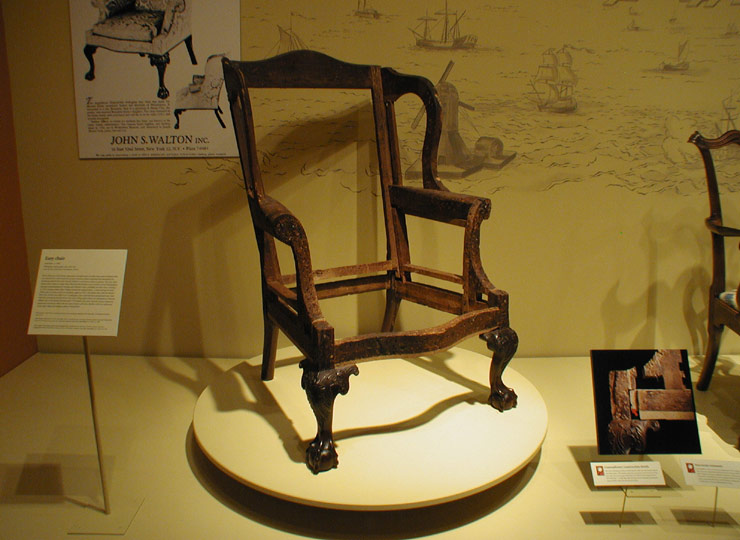
|
John Walton Antiques advertisement showing the authentic Gratz easy chair, the Magazine Antiques, April 1972. |
|
|
Inaccurate
ornament In hindsight, we now see that in comparison to the original all of the fake Gratz easy chair have poorly executed carving, which aside from its basic design has almost nothing in common with period workmanship. The work is contrived and overwrought, and the unusually sharp spines separating the leaves and divergent veining have no precedent in eighteenth-century Philadelphia carving. |
|
|
Contradictory
construction details The most damning evidence on the Stones' chair was discovered when it was taken apart. Old wooden peg holes are present on the tenons of the seat rails, but no corresponding holes are found on the upper part of the front legs-a clear sign that the seat rails are salvaged components from another chair that had pinned joints. |
Most collectors of the Stones' generation focused more on style, form, and ornament than on construction. Mid twentieth-century furniture fakers exploited this fascination by producing objects that were directly linked to well-known suites or groups. The easy chair shown here is one of at least three identical fakes based on an ornately carved Philadelphia example commissioned by Michael and Miriam Gratz, probably just after their wedding in 1769. Antique dealer John Walton owned the original twice- once during the early 1950s and, as evidenced by the ad above, again in 1971. The dealer who sold the Stone's their fake version described it as "a mahogany claw-and-ball foot upholstered easy chair with fine cabinetmaker." The dealer also knew that the Stones owned an important carved tea table with the same history and were familiar with the celebrated Gratz high chest and dressing table at Winterthur.